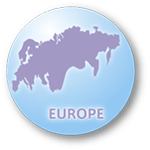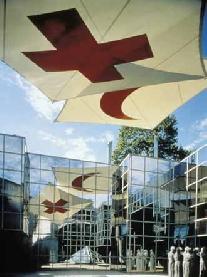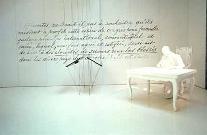EUROPE
International Red Cross and Red Crescent Museum (Switzerland)
(Feb. 6, 2008)
by Corinne Liardon, Public Relations of International Red Cross and Red Crescent Museum
Situated in the midst of numerous international organizations that have made the reputation of Geneva, the International Red Cross and Red Crescent Museum presents the work of the world’s first humanitarian organization.
To relieve, assist and protect: such are the aims of the International Red Cross and Red Crescent Movement. Since it was first set up in Geneva in 1863, the Red Cross has steadily grown throughout the world, giving help to those in greatest need with no discrimination as to nationality, race, religious beliefs, class or political opinions. The International Red Cross and Red Crescent Museum relates the extraordinary saga of these millions of men and women who have placed themselves in the service of mankind.
An original display of photographs, films, writings and unusual objects provides a fresh look at the evolution of interventions in case of conflicts and natural disasters. Modern audiovisual technology is used to heighten the emotional impact of the exhibition, which leaves no one indifferent. Visitors are not considered as mere spectators of other people's suffering but are encouraged to think and to act. They too can help build a peaceful world in which human dignity is a value cherished by all.
The Today area, inaugurated in 1999, is entirely devoted to the Movement's current work in the field. The main spheres of activity are described by means of five interactive modules that use concrete examples to explain how the Red Cross responds to urgent needs in such areas as disaster relief, the rehabilitation of mine victims and the protection of political prisoners. The modules are placed around an information lounge where visitors can obtain the latest news from the field and gain a better understanding of humanitarian action by viewing reports on Red Cross delegates and volunteers.
At the end of their tour, visitors can explore topics of interest to them in greater depth at the Caf? Dunant, a multimedia area equipped with computer terminals that provide access to the Museum's CD-ROM "Straight Talk" and to the Web sites of many other humanitarian organizations.
The original document of the 1864 Geneva Convention has been exhibited in the Museum since June 7, 2002. On loan from the Swiss Federal Archives, it has more than symbolic value. It lays the foundations of international humanitarian law and is at the origin of the present Geneva Conventions, adopted in 1949 and supplemented in 1977 by two Additional Protocols. Switzerland is the depositary of these treaties.
In 2007, the archives of the International Prisoners-of-War Agency (1914-1923) were included in the UNESCO Memory of the World Register. It is the first time that the patrimonial value of archives kept in Switzerland is considered of world importance.
Address: 17, av. de la Paix 1202 Geneva, Switzerland
Tel: +41-22-748-9511
Homepage: http://www.micr.org/
Days closed: Dec. 24, 25, 31 and Jan. 1
Admission: Adults, CHF 10.00
School children from 12 to 16 years old and students, CHF 5.00
(Originally published on February 4, 2008)
 Peace Museums of EUROPE
Peace Museums of EUROPE

